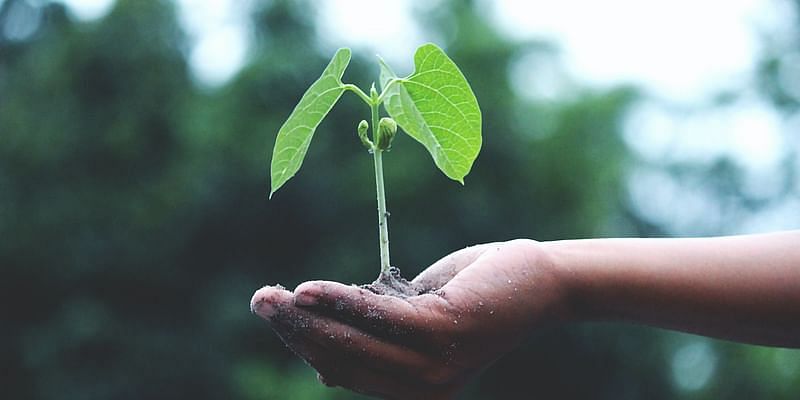Climate finance, action, and implementation were top of the agenda at Sharm El-Sheikh, Egypt, at the recently concluded COP-27. Innovation was at the forefront as well, with a specially designated “Climate Change Innovation Zone”, enabling discussions on everything from alternative materials to green hydrogen.
India, at the heels of its now cemented “Nationally Determined Contributions”, laid out its plan for long-term decarbonisation of the economy (LT-LEDs), adding to the list of 56 countries to have done so to date. Getting India to net zero emissions by 2070 will be a monumental task; and given the socio-economic fabric of our country, will require a fine balance between people, profits, and the planet.
The focus areas laid down in India’s LT-LEDS—namely electricity, urbanisation, transport, forests, industry, carbon removal, and finance—create numerous opportunities for technology-led innovation, which can help achieve this balance. There has never been a better time to be an early-stage startup building for climate.
Decarbonising electricity is critical: the power sector is already India’s largest greenhouse gas emitter, accounting for 49% of emissions, and electricity consumption per capita is expected to continue to increase. India targets to achieve 50% installed capacity from renewables by 2030.
Innovative approaches will be required across the renewable energy value chain from generation to storage, creating opportunities in organising solar demand and supply, creating waste-to-energy systems, manufacturing cost-effective green hydrogen electrolysers (in line with the National Hydrogen Mission), and developing solutions for long-term and temporary energy storage. Grid optimisation/smart grid technology will also be essential for interoperability and decentralisation.
By 2035, India’s urban population is projected to grow to 675 million, necessitating climate-smart cities. Data platforms leveraging satellite and remote sensing data can enable better urban planning, while the use of IoT and big data can help improve energy efficiency for residential and commercial buildings. Steel and cement being hard-to-abate sectors will necessitate the development of alternative materials for the built environment.
Low-carbon transportation across passenger and freight use cases will be imperative to combat the sector’s 10% contribution to GHG emissions. Innovations across battery technology, electric vehicles, and charging can help accelerate electrification. Improved route mapping and optimisation in logistics will shorten distances and thus reduce emissions, as will increased popularity of alternatives to personal mobility, such as shared mobility and micro-mobility. Product and tech-first approaches to organising biomass supply chains can also help achieve the 2030 target for 20% ethanol-blended fuels.
Forest cover preservation and nature-based carbon sequestration solutions can be scaled-up rapidly through AI/ML and remote-sensing-based measurement, reporting, and verification (MRV), while technology platforms can help democratise financing for such projects. Climate data platforms can help improve the predictability of forest fires and other calamities, enabling quick response. Land-use optimisation through vertical farming, sustainable animal feed (to substitute grazing), etc. can help reduce competition and associated deforestation.
As India strives to boost domestic manufacturing, industrial demand for energy, steel and cement will continue to grow. Sustainable industrialisation can be achieved by improving circularity in industrial processes, including the use of alternative low-GHG materials, improved waste management, treatment of effluents etc. Digitising supply chains can help create process efficiencies across sourcing, production, distribution and end-of-life, which thus creates a large opportunity for innovative B2B businesses.
Extensive R&D and international collaboration will be necessary to make carbon capture, use and storage (CCUS) cost-effective and energy-efficient for the most polluting industries. Start-ups can also play a role in increasing the availability and deployment of green finance, by replicating the success of fractional real estate platforms – and shifting focus towards green assets such as solar and wind plants.
Finally, the LT-LEDS also placed great emphasis on the concept of LIFE (Lifestyle for Environment)—which presents a large opportunity for innovations along sustainable consumption—as evidenced by the recent proliferation of plant-based meat alternatives, sustainable CPG and circular fashion platforms.
These priorities reinforced at COP27 lay down a pivotal role for early-stage startups to innovate and disrupt legacy systems, processes and models, and create solutions for India Net Zero.



![Read more about the article [Budget 2022] Finance Minister announces Digital University, PM eVidya scheme expansion](https://blog.digitalsevaa.com/wp-content/uploads/2022/02/Featured-image-01-1643690877128-300x150.png)




![Read more about the article [Weekly funding roundup June 8-14] VC funding dips in the absence of large deals](https://blog.digitalsevaa.com/wp-content/uploads/2024/05/Weekly-funding-roundup-1670592545805-300x150.png)

